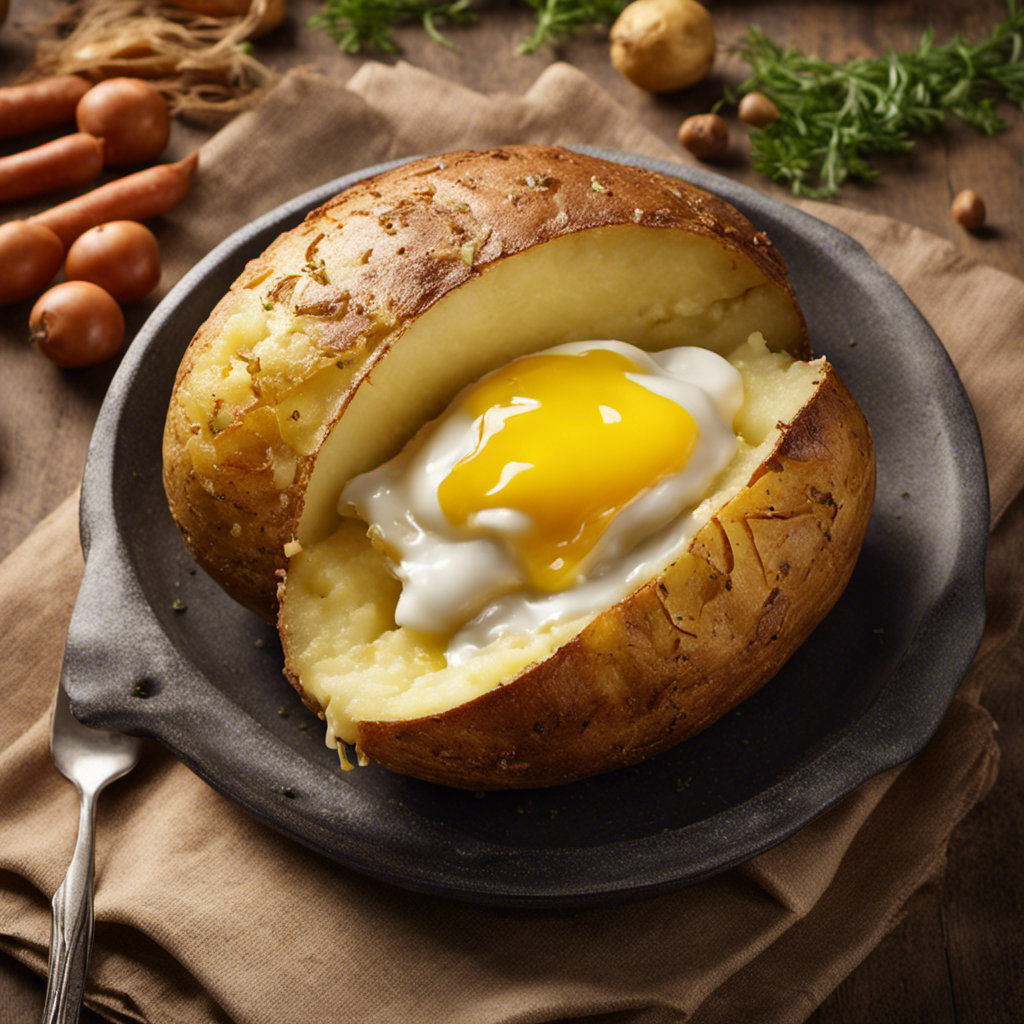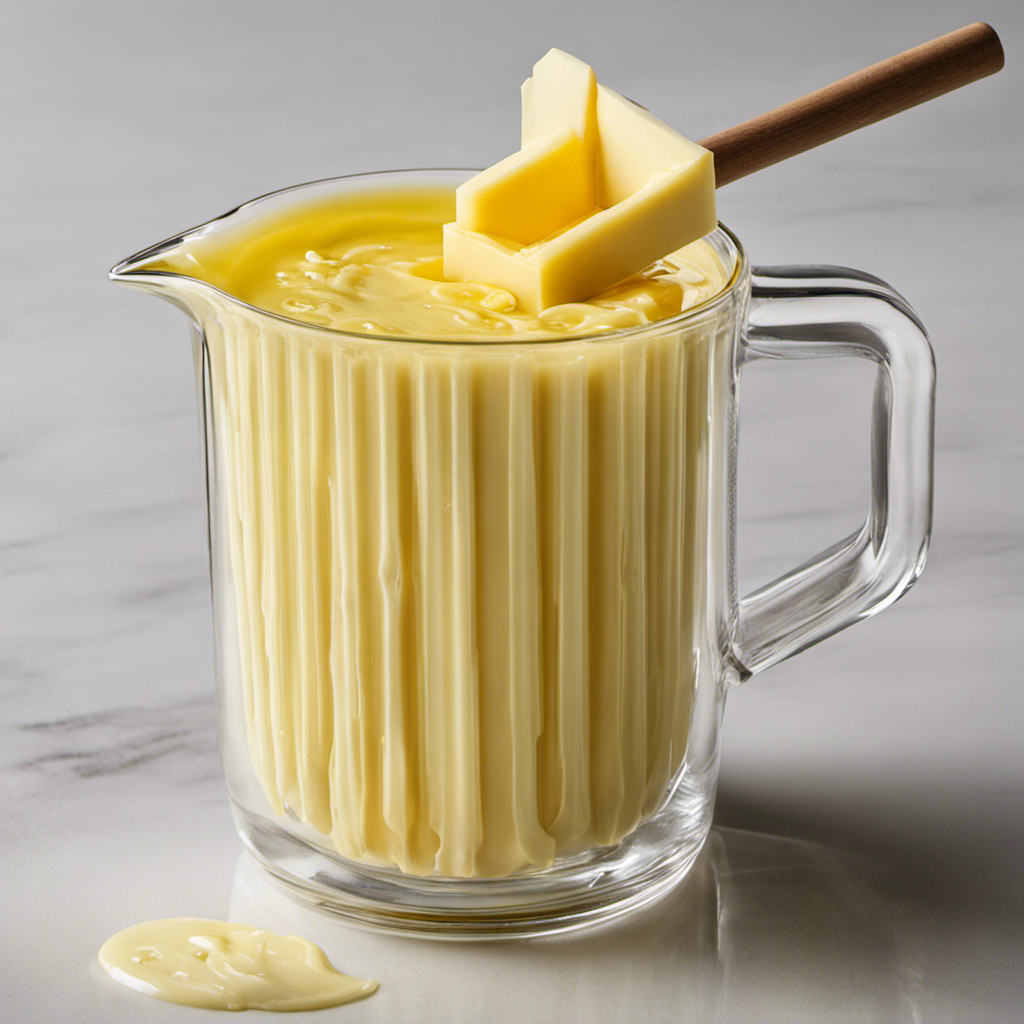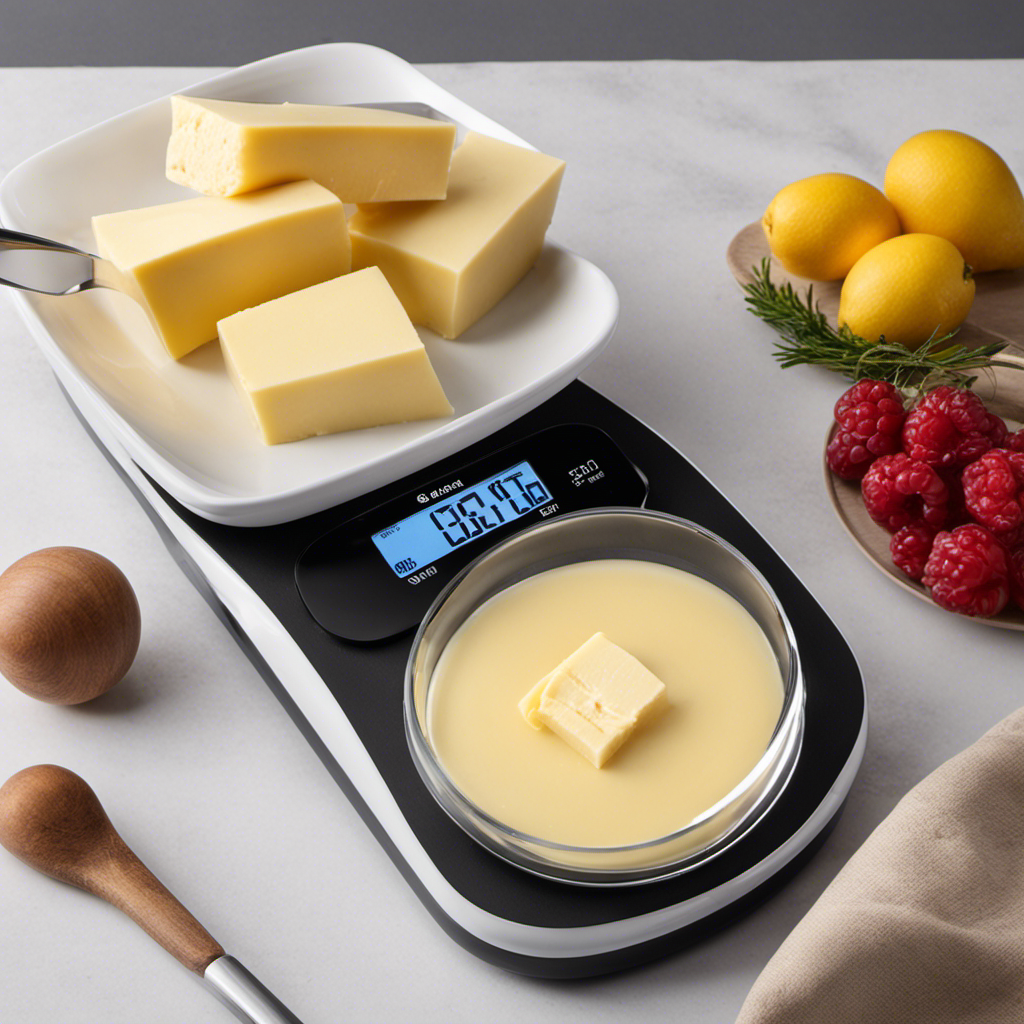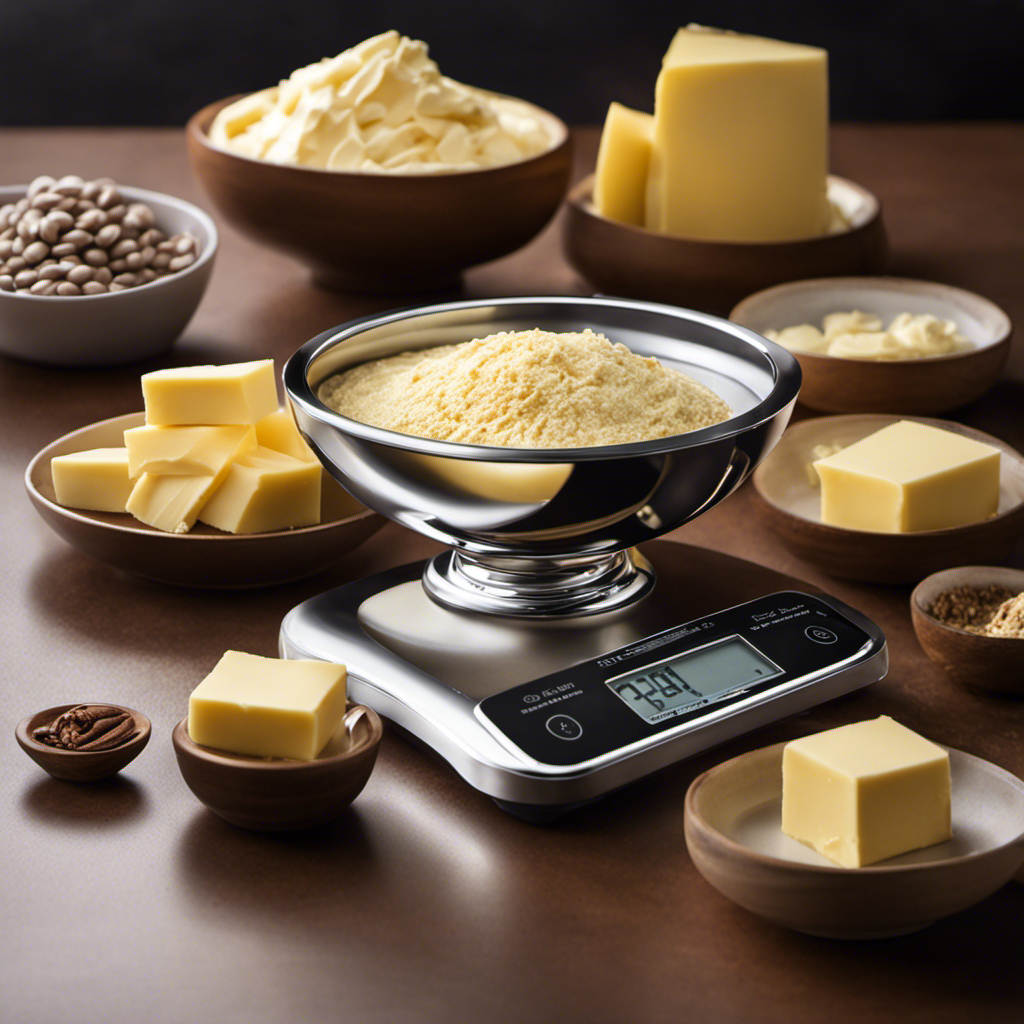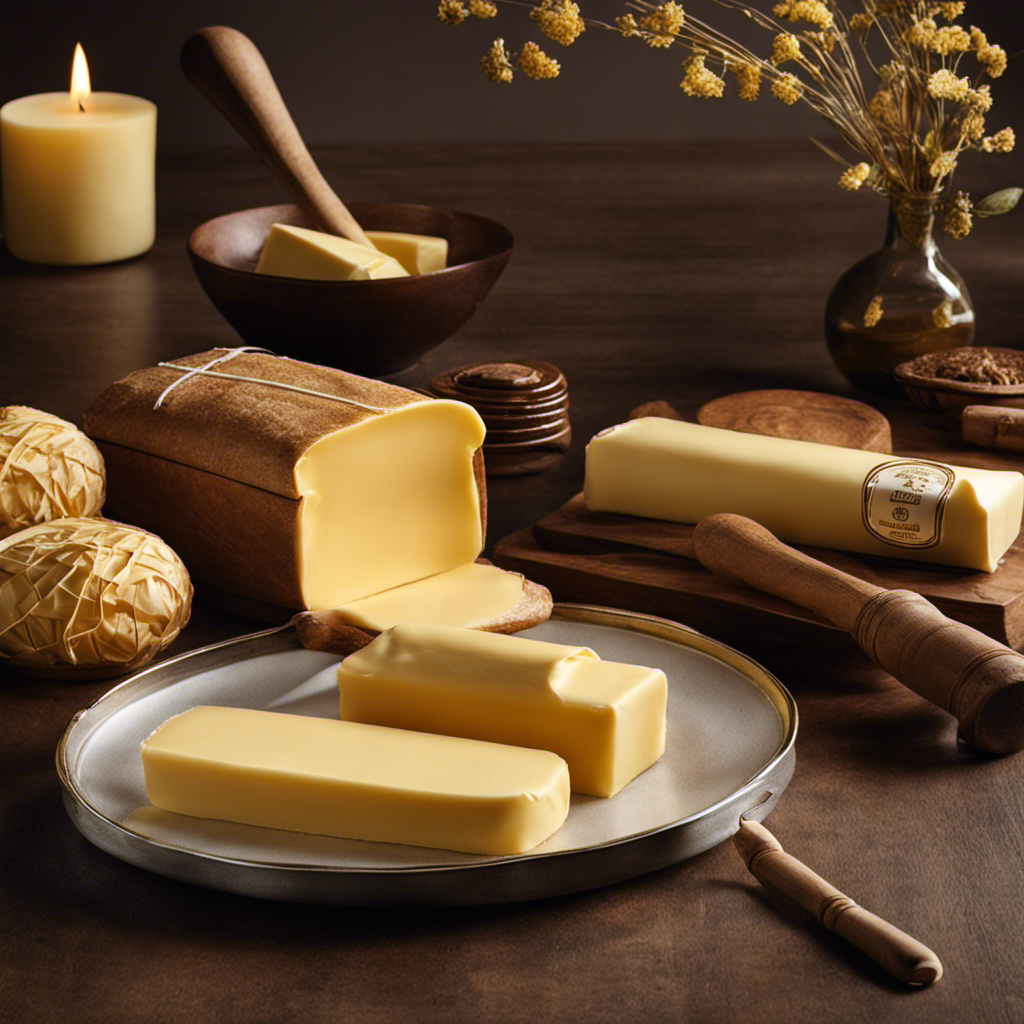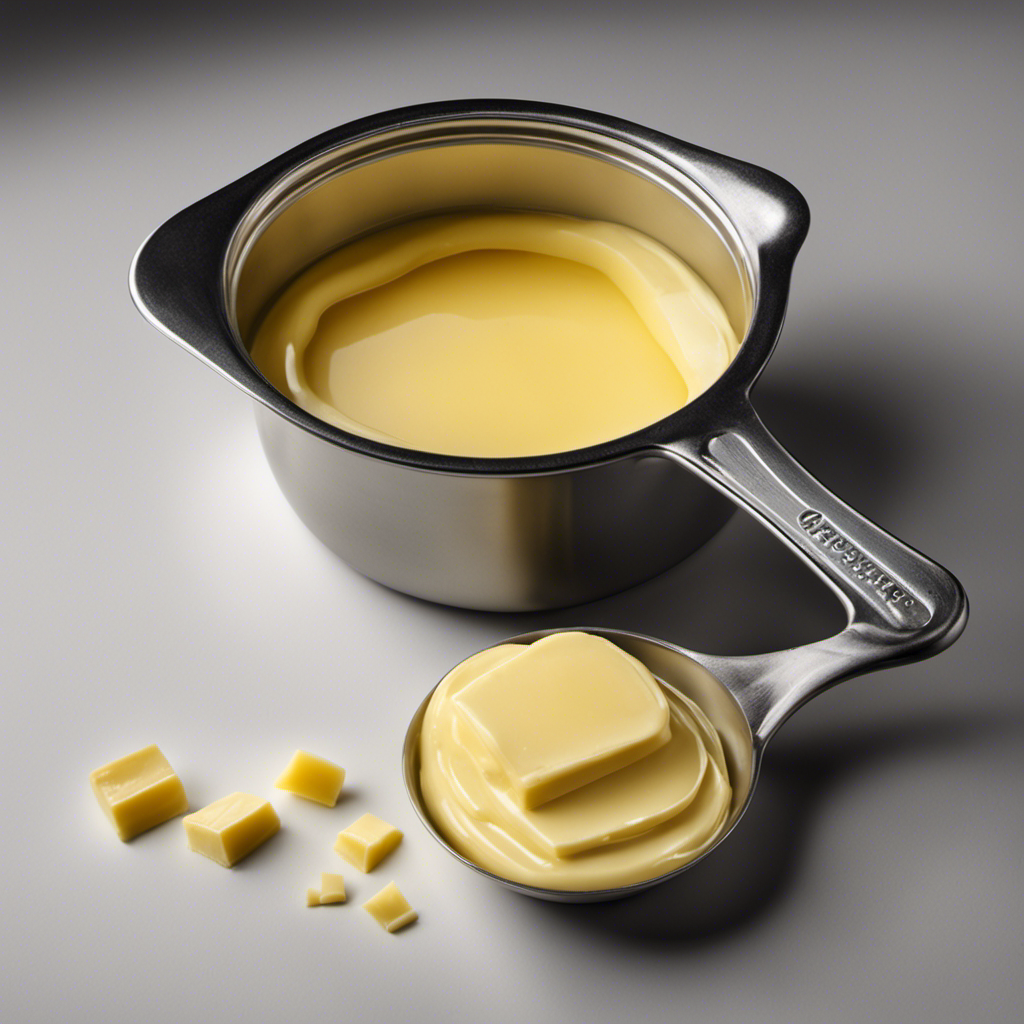I’ve always been curious about the calorie content of a baked potato with butter. It’s a tasty accompaniment that I frequently relish, but I’ve never been certain about its precise nutritional worth. Therefore, I took it upon myself to investigate and discover the facts.
In this article, we’ll delve into the caloric content of buttered baked potatoes and explore how this classic side dish contributes to our daily energy intake. Get ready to discover the surprising facts behind this tasty treat.
Key Takeaways
- A medium-sized baked potato contains approximately 161 calories.
- Adding a tablespoon of butter to a baked potato increases the calorie count by an additional 102 calories.
- The total calorie count of a baked potato with butter is around 263 calories.
- Practice portion control and balance your meal with other nutritious foods.
The Nutritional Value of Baked Potatoes
You’ll be pleased to know that baked potatoes are a great source of vitamins and minerals. They are low in fat and cholesterol, and also provide a good amount of fiber.
When it comes to counting calories, baked potatoes are a smart choice. A medium-sized baked potato, weighing around 173 grams, contains approximately 161 calories.
To keep your calorie intake in check, portion control strategies can be helpful. Instead of loading your baked potato with high-calorie toppings like butter and sour cream, opt for healthier alternatives like Greek yogurt or salsa. Additionally, you can also try reducing the size of your potato or sharing it with someone else.
Counting Calories: A Baked Potato Breakdown
If you’re watching your intake, it’s helpful to know the nutritional value of a baked potato topped with butter. Let’s break it down. A medium-sized baked potato, weighing about 173 grams, contains approximately 161 calories. Adding a tablespoon of butter, which is about 14 grams, increases the calorie count by an additional 102 calories. So, a baked potato with butter totals to around 263 calories. While this may seem high, it’s important to remember that portion control is key. Baked potatoes are a good source of vitamins and minerals, including Vitamin C, potassium, and fiber. They also provide complex carbohydrates that can help keep you feeling full and satisfied. By practicing portion control and balancing your meal with other nutritious foods, a baked potato can still be enjoyed as part of a healthy diet.
| Nutrient | Quantity per 173g |
|---|---|
| Calories | 161 |
| Fat (g) | 0.3 |
| Carbohydrates (g) | 36.6 |
Unveiling the Caloric Content of Buttered Baked Potatoes
When it comes to butter vs. margarine, many people wonder which is healthier. In this discussion, we will explore the nutritional differences between the two and examine if there are any healthier butter substitutes available.
Additionally, we will delve into portion control strategies to help manage caloric intake when using butter or its alternatives.
Butter Vs. Margarine
To compare butter and margarine, you might be wondering which one is healthier for your baked potato.
Butter is a dairy product made from churning cream, while margarine is a butter substitute made from vegetable oils.
When it comes to health benefits, margarine has a slight advantage. It is often fortified with vitamins A and D, which are beneficial for your overall health. Margarine also contains unsaturated fats, which can help lower bad cholesterol levels.
However, it is important to note that some margarines may contain trans fats, which can be harmful to your health.
In conclusion, while margarine may have some health benefits over butter, it is essential to choose a healthier butter substitute that is low in trans fats and made from healthier oils.
This brings us to the next section about finding a healthier butter substitute.
Healthier Butter Substitute
A healthier butter substitute that is low in trans fats and made from healthier oils can provide a better option for those looking to improve their overall health. Healthier butter alternatives, such as avocado spread or nut butters, offer numerous benefits compared to traditional butter.
These substitutes are often made from natural ingredients and contain essential nutrients like healthy fats, vitamins, and minerals. Unlike butter, they are low in trans fats, which have been linked to various health issues such as heart disease. Additionally, healthier butter substitutes can help reduce cholesterol levels and promote better digestion.
They also offer a variety of flavors and can be used in cooking and baking just like regular butter. Making the switch to these alternatives can be a simple yet effective way to enhance your overall well-being.
Portion Control Strategies?
You can easily manage your portion sizes by using smaller plates and bowls. This simple trick can help you control your food intake and prevent overeating.
Here are some portion control tips to help you stay on track:
-
Use smaller plates and bowls: By doing so, you visually trick your brain into thinking you are eating a larger portion.
-
Fill half your plate with vegetables: This adds volume and nutrients to your meal, while keeping the calorie count low.
-
Measure your food: Use measuring cups or a food scale to accurately portion your meals and snacks.
-
Practice mindful eating: Slow down and savor each bite, paying attention to your body’s hunger and fullness cues.
-
Choose healthy alternatives: Opt for nutrient-dense foods like fruits, vegetables, whole grains, and lean proteins.
Exploring the Calorie Count of a Classic Side Dish
Dig into the deliciousness of a baked potato with butter and find out how many calories it contains. Baked potatoes have been enjoyed for centuries, with the first records of their consumption dating back to the Inca civilization. They are a versatile side dish that can be dressed up with a variety of toppings.
Some of the best toppings for baked potatoes include sour cream, chives, bacon, and cheese. These toppings can elevate the flavor and texture of the potato, adding a delightful richness. However, it’s important to note that adding butter to your baked potato can significantly increase its caloric load.
Butter is high in fat and calories, so it’s essential to be mindful of portion sizes when enjoying this classic combination.
How Butter Adds to the Caloric Load of Baked Potatoes
Adding butter to a baked potato significantly increases its caloric load, so it’s important to be mindful of portion sizes when enjoying this classic combination. The creamy, rich flavor of butter melting into the tender flesh of a baked potato is undeniably delicious. However, it’s worth noting that just one tablespoon of butter adds around 100 calories to your potato.
To put that into perspective, here’s what you could have instead:
- A sprinkle of low-fat shredded cheese and a dollop of Greek yogurt
- A drizzle of olive oil and a sprinkle of sea salt
These alternative spreads offer flavor and texture without the same caloric impact. So, if you’re watching your calorie intake, it might be worth exploring these options to enhance your baked potato experience while keeping your portion size and overall calorie count in check.
Understanding the Energy Input of Buttered Baked Potatoes
In order to fully understand the caloric density of buttered baked potatoes, it’s important to consider the impact of different cooking methods. Certain cooking techniques can affect the caloric content of the potatoes themselves, which in turn influences the overall caloric load of the dish.
For example, boiling a potato has been found to preserve more of its natural moisture, resulting in a lower caloric density compared to baking or frying. The table below illustrates the approximate calorie content of different cooking methods for a medium-sized baked potato:
| Cooking Method | Calories per 100g |
|---|---|
| Baked | 93 kcal |
| Boiled | 87 kcal |
| Fried | 319 kcal |
As you can see, baking or boiling a potato yields a lower calorie count compared to frying. When butter is added to a baked potato, it’s important to consider the additional calories it contributes. By understanding the caloric density and impact of cooking methods, you can make more informed choices when it comes to your potato preparations.
Frequently Asked Questions
Can I Reduce the Calorie Content of a Baked Potato by Removing the Skin?
Removing the skin from a baked potato can reduce its calorie content. However, it also reduces the nutritional value, as the skin contains fiber, vitamins, and minerals. It’s important to consider the overall balance of nutrients in your diet.
How Does the Cooking Method Affect the Calorie Count of a Baked Potato?
Different cooking methods can affect the calorie content of a baked potato. For example, boiling or steaming the potato may retain more nutrients and result in a lower calorie count compared to baking or frying.
Are There Any Health Benefits to Consuming Baked Potatoes?
Baked potatoes have health benefits due to their nutritional value. They are a good source of vitamins and minerals, provide dietary fiber, and can support a healthy digestive system.
Can I Substitute Butter With a Healthier Alternative for My Baked Potato?
Yes, you can substitute butter with healthier alternatives for your baked potato. Some options include olive oil, Greek yogurt, or mashed avocado. Consuming baked potatoes without butter can still provide health benefits like fiber, vitamins, and minerals.
Is It Okay to Consume Buttered Baked Potatoes on a Regular Basis if I Am Trying to Maintain a Healthy Diet?
Regular consumption of buttered baked potatoes may hinder weight loss efforts due to the high calorie content. While potatoes themselves are nutritious, the addition of butter increases the calorie and fat content, which may not be ideal for a healthy diet.
Conclusion
In conclusion, it is essential to understand the caloric content of a baked potato with butter for those looking to maintain a healthy diet. By breaking down the nutritional value and exploring the impact of butter, we can make informed choices about our meals.
Remember, knowledge is power when it comes to our health. Coincidentally, the more we know, the better we can take care of ourselves. So, next time you indulge in a buttered baked potato, keep in mind the energy input it brings and make a conscious decision about your overall calorie intake.
Stay informed, stay healthy!
